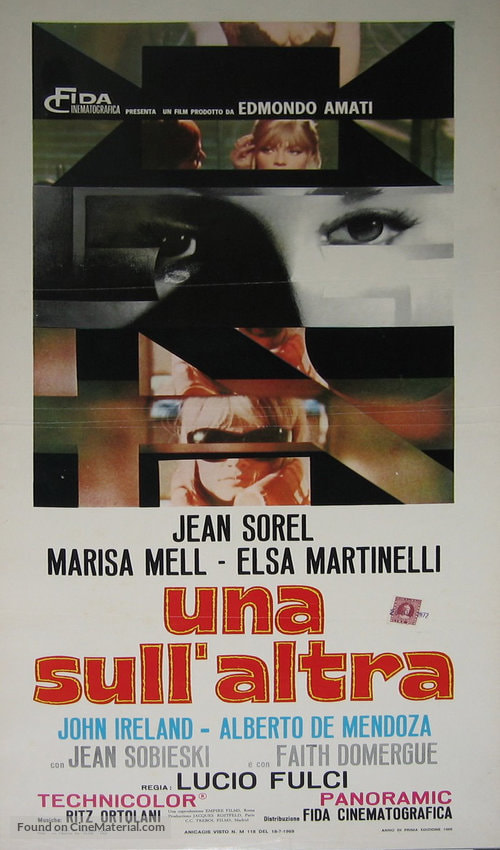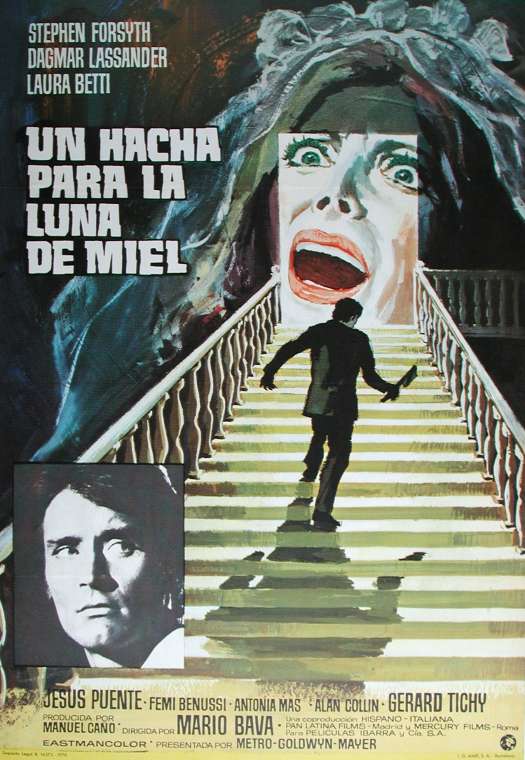Doctor George Dumurrier, who runs a clinic in San Francisco, is trapped in a loveless marriage with asthmatic Susan. He escapes both his marriage and his clinic (in which, despite us being repeatedly told it's 'his life', we never really see him) to have an affair with a friend, Jane. While away on a 'fundraising trip' (ie a shagfest with Jane), George's brother Henry tells him that Susan has died of an asthma attack. We discover that she had a secret life insurance policy worth $2 million, with George as sole beneficiary. Susan's sister, Marta, doesn't seem too happy with George, and Henry too seems to eye him with suspicion. George then receives an anonymous tip-off which results in him witnessing the striptease performance of Monica Weston, who is a dead ringer for Susan (albeit with different colour hair and eyes). Suspecting that there's more to Susan's death than meets the different-coloured eye, George and Jane seek to befriend Monica to find out more. The police, acting on a tip-off from the insurance agency, discover evidence in Monica's apartment which suggests she's been posing as Susan. Eventually she confesses all, and the murderer is caught. Or are they..?
There's a fail aul whack of Vertigo off this film, as you've probably gathered from the synopsis. There's also a healthy sprinkling of The Sweet Body of Deborah, and this is very much one of those late 60s rich-people-playing-psychological-games-in-exotic-locales gialli, rather than a Bava or Argento clone. Murders are few and far between, to say the least. What you do get, though, is an extremely liberal dose of sex and nudity, far more than was typical in a late 60s thriller, so that's something.
Style-wise, the film exudes an air of competence rather than ostentation, only let down by occasionally shaky handheld work (and aerial shots which must have been shot by a defective camera, or else one operated by someone with a deathly fear of flying). There are some moments of arty style, not least in the sex scenes, which incorporate lush lighting and, on one occasion, some Camilla 2000-esque filming through a transparent mattress. These touches are needed, to be honest, as Fulci revels a bit too much in the new-found sexual permissiveness of the era, dragging the scenes on far too long.
The murder plot at the heart of the film is simultaneously brilliant and preposterous. Brilliant, in that the central conceit which underpins said plot is pretty ingenius; without giving too much away it's one of those plans which sees those characters doing the investigating thinking that they're making headway towards solving the case, whereas they're actually following a carefully laid-out path towards their own downfall. It's preposterous in that the evidence with which a court reaches a crucial verdict, which is later upheld by a state governor, is based on extremely flimsy and circumstantial evidence. The governor upholds the decision after granting a temporary stay of execution, despite almost all of the key witnesses for the prosecution having fled the country, which surely must give rise to some reasonable doubt.
The murder plot, and film as a whole, hinges on the credulity of the appearance of Ms Weston, who looks exactly like Susan Dumurrier, and was apparently tied up in the circumstances surrounding Ms Dumurrier's death. (SPOILERS) Not everyone buys this, and to be fair George and Jane do harbour serious suspicions that Susan and Monica are the same person, but surely either they or the police could've easily gleaned conclusive proof as to who she really is? Granted, she spent a few months creating the persona of Monica, but couldn't the police have dug a little deeper? Or examined her to see if she was wearing contact lenses and a wig? (The fuzz seem to be already convinced of George's guilt, and swallow anything which supports this, despite there not really being a sense of him being a suspect until he's casually told that he may be facing the chair.) Also, if my wife stripped in front of me, wearing a wig and coloured lenses but speaking in her usual voice, I'd like to think I'd be pretty certain it was her. Simply put, George should've been certain that Susan and Monica were the same person from the off, and the police, and George's legal team, should've been able to prove the same without too much difficulty. That this doesn't happen is crucial for the film's execution, so to speak, but upon repeated viewings becomes hard to ignore. (SPOILERS END)
The film slows slightly once Monica shows up, initially to linger over her body for an extended striptease, but then to detail George and Jane's attempts to uncover the truth about her identity, and, as a consequence, Susan's death. Up to that point we've been witnessing George's life spiral out of control (borne with admirable stoicism by Jean Sorel, unsurprisingly), but there's not quite enough meat for the investigation to sink its teeth into, with very little actual progress made for a good half hour. Saying that, as stated above, on first viewing the mystery of Monica's provenance will probably be more than enough to sustain viewers.
The climax is actually executed quite daringly, with few of the main characters getting any quality screen time over the final seven or eight minutes. There are a couple of big temporal leaps in the film; early on we jump from Susan's death to a month later, and towards the end we skip over an arrest and trial. We're then on the point of witnessing the gassing of a leading character, when we jump to a brand new chap with a microphone addressing the camera. He fills us in on the dramatic events which stopped the execution in its tracks, some of which we're shown, but much of which we're merely told. It very much keeps any catharsis at arm's length, but then again none of the characters are especially likeable-at least, they're not morally upstanding, and would possibly have been viewed with some suspicion and/or distaste by Fulci-so perhaps they don't deserve full redemption and a happy ending. Adding to the surreal nature of the ending is the fact that the reporter character, who gives us a heavily visually-orientated tour of San Quentin's gas chamber, turns out to be working for radio.
There are other slightly bizarre touches, as you'd expect in an Italian production. As stated, the criminal case which is brought against one of the leading characters in embarrassingly anaemic, and I was reminded of Dancer in the Dark in some ways, where a character is condemned to death in the most avoidable circumstances, simply because the film's narrative demands it. The corpse of Susan, which is being stored in a forensic lab, has decomposed an awful lot in the course of a month, suggesting that the lab doesn't have working refrigeration units. Further doubt as to the capabilities of the lab must be raised after they managed to initially miss the fact that Susan was poisoned. And, finally, in an amazing moment which is so throwaway it's easy to miss, Monica Weston, sitting on her bed in her smalls is asked an awkward question by George, who, as part of his investigation, has just completed a thorough inspection of her body. A knock on the door provides a timely interruption, saving Monica from having to answer the question. She's so relieved that she exclaims "Oh good, guests!" Well, you probably have to be there, watching it, but it's a very incongruous reaction, and should've been picked up on by George.
I haven't really passed much judgement on this film here. It is, simply put, great fun, especially on first viewing. The location work is brilliant, the sexuality is admirably envelope-pushing (and envelope-fingerprinting), the plot is brilliant (and shonky), and Fulci always seems in control. He'd go on to make more violent, and better, gialli, but if this film hadn't been as good as it is, the cinematic landscape of the 70s and 80s would have been all the poorer for it, as Fulci may well have returned to the Italian comedy wasteland. As long as you can swallow outrageous contrivances, and don't get annoyed when characters store medicine that can kill a spouse right beside medicine that can save said spouse's life, you'll find much to enjoy here.


 RSS Feed
RSS Feed
